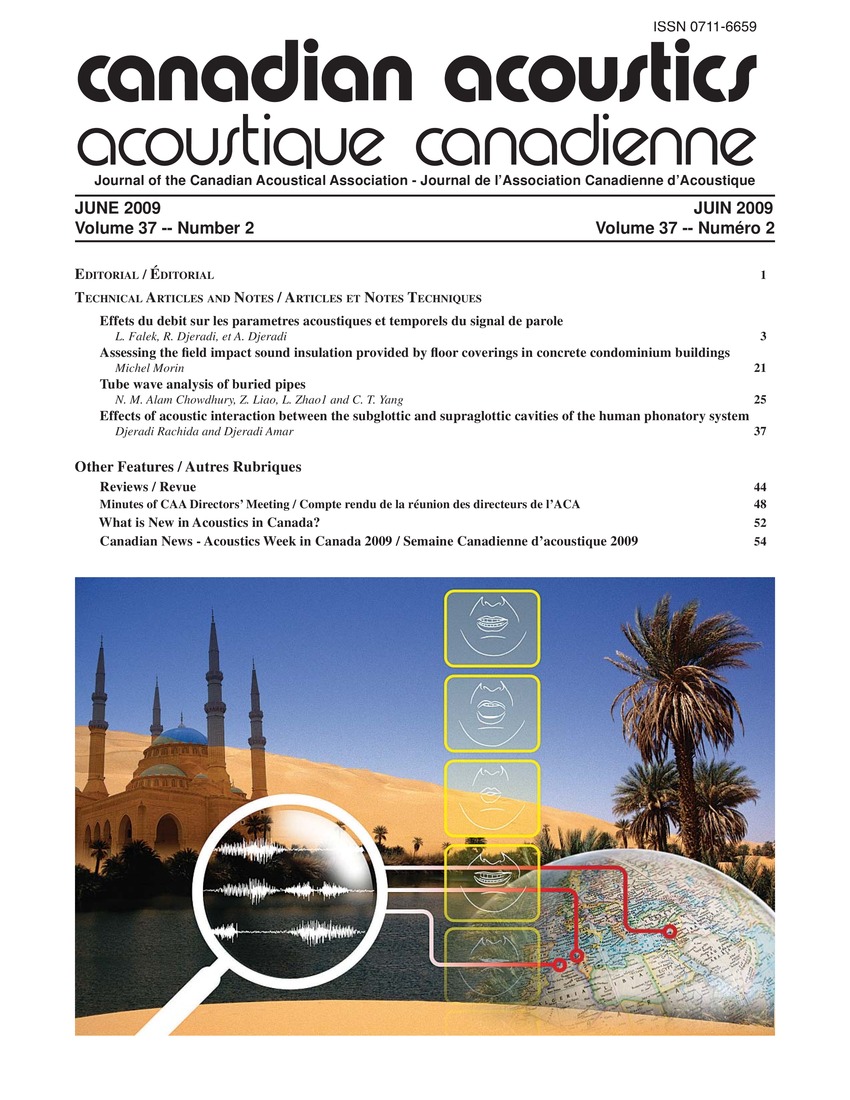Assessing the field impact sound insulation provided by floor coverings in concrete condominium buildings
Keywords:
Acoustic waves, Apartment houses, Concrete blocks, Concrete slabs, Floors, Laws and legislation, Probability density function, Sound insulating materials, Construction professionals, Floor covering, Impact noise, Impact sound, Impact sound insulation, Noise isolation, Statistical approachAbstract
Several regulations and co-property acts allow condominium owners to install hard floor coverings provided that a minimum impact sound isolation rating is achieved. Many construction professionnls recommend such surfaces based on tests performed using the procedures described in ASTM E 492 or ASTM E 1007. During the present study, thirty-five bare concrete slabs with thicknesses ranging from 200 to 250 mm (8 to 10 in.) were randomly tested in different buildings in Montreal using the procedures outlined in ASTM E 1007. The large variations noted in the measured NISPLs and FIIC ratings suggest that the results of tests made in strict conformance with ASTM E 1007 are anecdotal and cannot be used by acousticians and construction professionals to predict the impact noise isolation provided by a floor covering installed on a "typical" 200 mm (8 in.) to 250 mm (10 in.) thick concrete slab. This paper presents the results of these measurements and proposes a statistical approach to predict the probability that a floor installed on a typical 200 to 250 mm thick concrete slab will achieve the noise isolation target set forth in the regulation, or in the co-property act (usually FIIC 55 in Canada and FIIC 50 in USA).Additional Files
Published
How to Cite
Issue
Section
License
Author Licensing Addendum
This Licensing Addendum ("Addendum") is entered into between the undersigned Author(s) and Canadian Acoustics journal published by the Canadian Acoustical Association (hereinafter referred to as the "Publisher"). The Author(s) and the Publisher agree as follows:
-
Retained Rights: The Author(s) retain(s) the following rights:
- The right to reproduce, distribute, and publicly display the Work on the Author's personal website or the website of the Author's institution.
- The right to use the Work in the Author's teaching activities and presentations.
- The right to include the Work in a compilation for the Author's personal use, not for sale.
-
Grant of License: The Author(s) grant(s) to the Publisher a worldwide exclusive license to publish, reproduce, distribute, and display the Work in Canadian Acoustics and any other formats and media deemed appropriate by the Publisher.
-
Attribution: The Publisher agrees to include proper attribution to the Author(s) in all publications and reproductions of the Work.
-
No Conflict: This Addendum is intended to be in harmony with, and not in conflict with, the terms and conditions of the original agreement entered into between the Author(s) and the Publisher.
-
Copyright Clause: Copyright on articles is held by the Author(s). The corresponding Author has the right to grant on behalf of all Authors and does grant on behalf of all Authors, a worldwide exclusive license to the Publisher and its licensees in perpetuity, in all forms, formats, and media (whether known now or created in the future), including but not limited to the rights to publish, reproduce, distribute, display, store, translate, create adaptations, reprints, include within collections, and create summaries, extracts, and/or abstracts of the Contribution.


